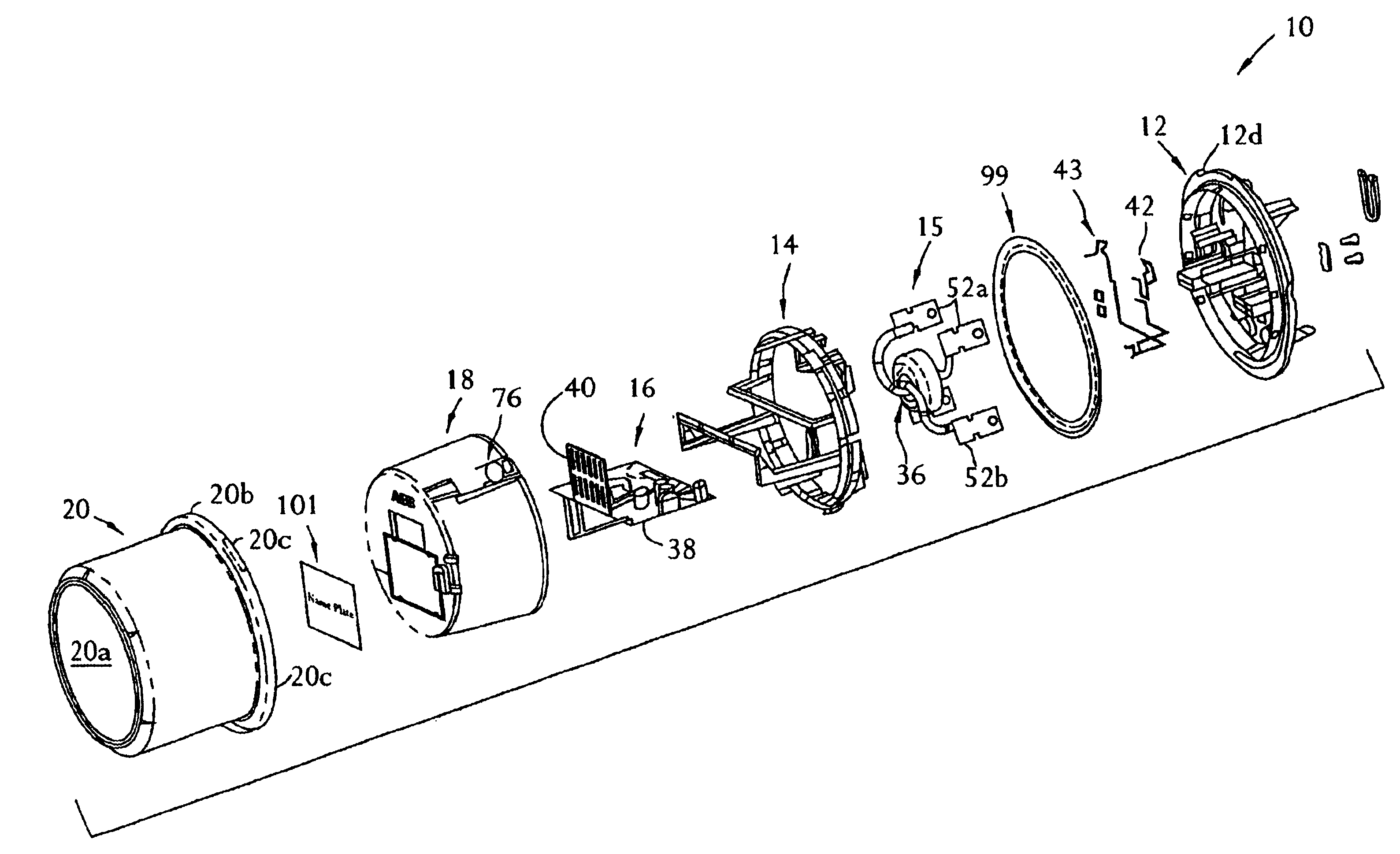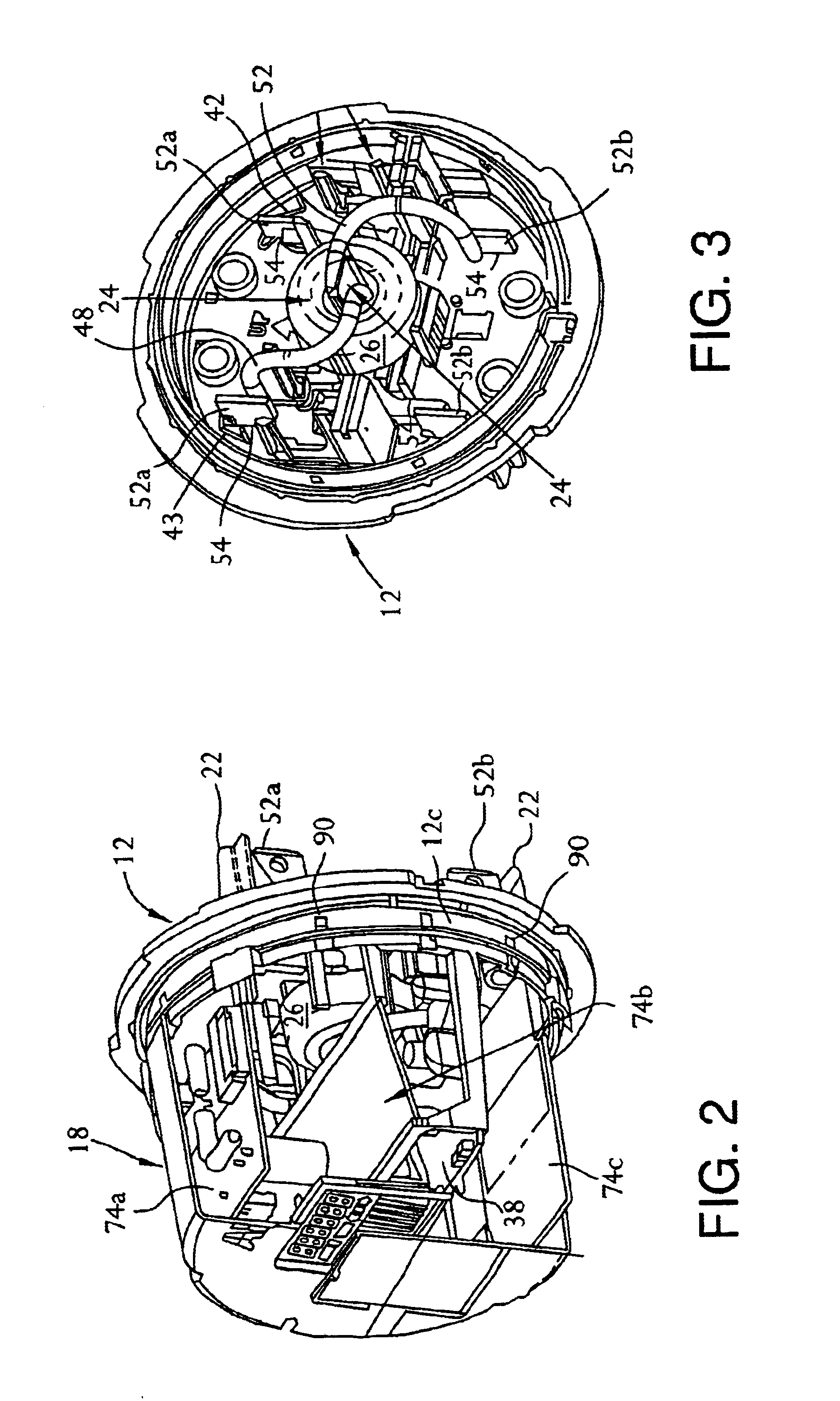Electrical-energy meter
a technology of electrical energy meters and solid-state meters, which is applied in the direction of dynamo-electric motor meters, substation/switching arrangement details, instruments, etc., can solve the problems of increasing the overall parts count and assembly time of the meter, not reaching the extent of commercial and industrial use, and increasing the manufacturing cos
- Summary
- Abstract
- Description
- Claims
- Application Information
AI Technical Summary
Benefits of technology
Problems solved by technology
Method used
Image
Examples
Embodiment Construction
A presently-preferred embodiment of a solid-state electrical-energy meter 10 adapted for residential use is depicted in FIGS. 1 to 15B. The electrical-energy meter 10 is described in detail for exemplary purposes only, as the various features of the present invention can be incorporated into other types of electrical-energy meters, including electrical-energy meters adapted for commercial and industrial uses.
The electrical-energy meter 10 comprises a base 12, a circuit-board support member 14, a current sensor assembly 15, a circuit board assembly 16, an inner housing 18, and a cover 20.
The base 12 is depicted in detail in FIGS. 3, 5, 14A, and 16. The base 12 is preferably molded from a reinforced thermoplastic material having the requisite mechanical, electrical, and thermal properties, flammability rating, UV stabilization, and resistance to common solvents such as insecticides and cleaning solutions. An example of such thermoplastic material is polyketone or PBT.
The current senso...
PUM
 Login to View More
Login to View More Abstract
Description
Claims
Application Information
 Login to View More
Login to View More - R&D
- Intellectual Property
- Life Sciences
- Materials
- Tech Scout
- Unparalleled Data Quality
- Higher Quality Content
- 60% Fewer Hallucinations
Browse by: Latest US Patents, China's latest patents, Technical Efficacy Thesaurus, Application Domain, Technology Topic, Popular Technical Reports.
© 2025 PatSnap. All rights reserved.Legal|Privacy policy|Modern Slavery Act Transparency Statement|Sitemap|About US| Contact US: help@patsnap.com



